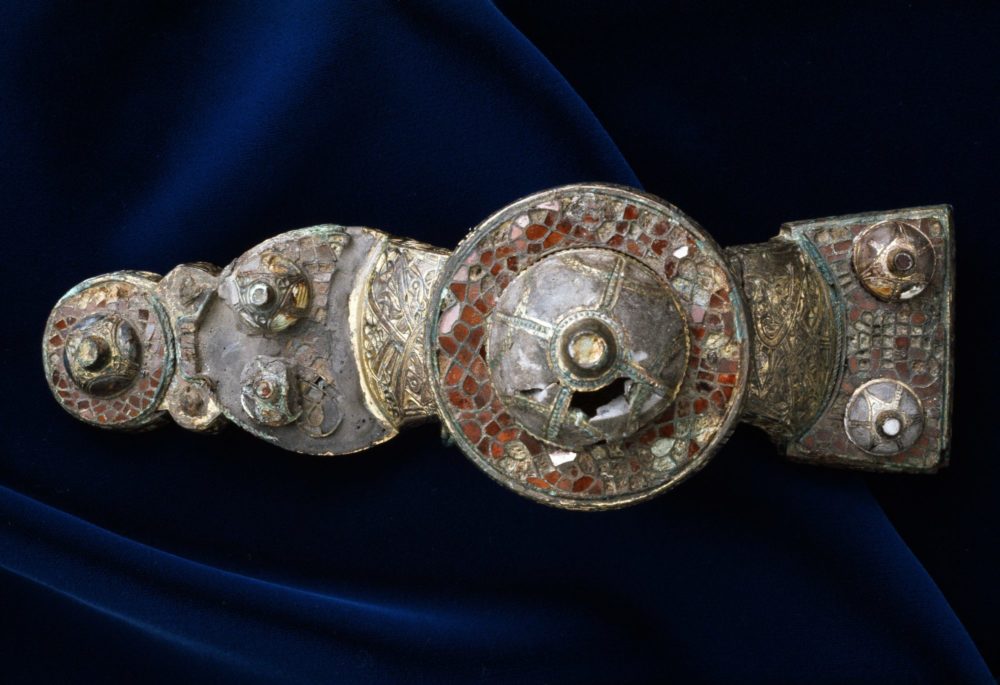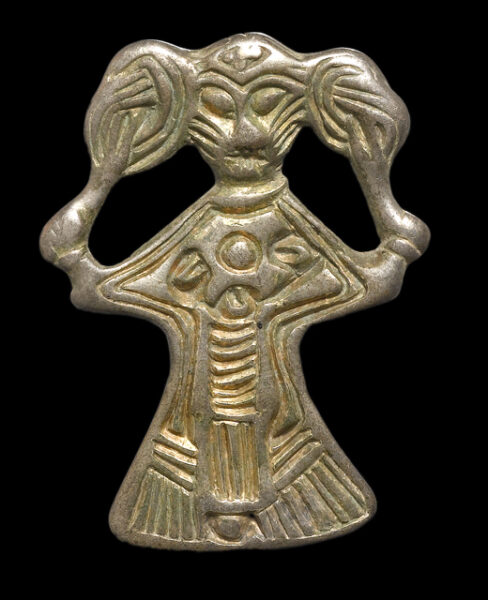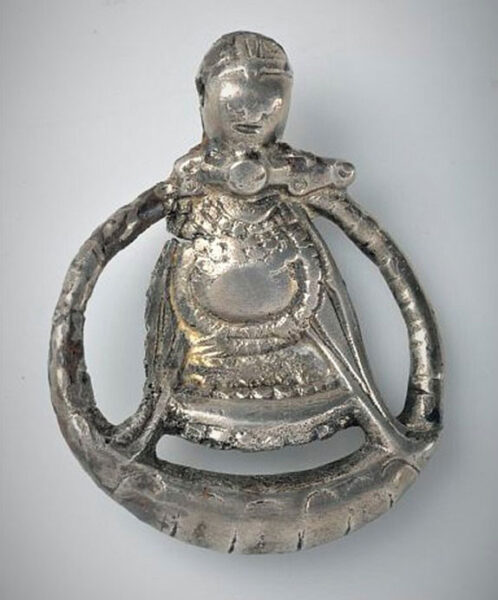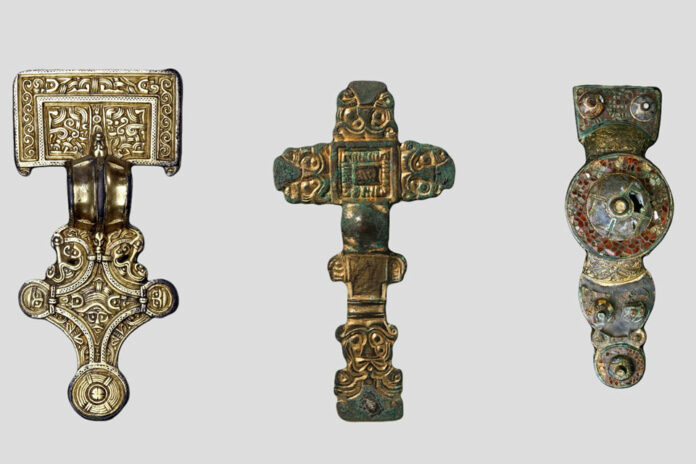The migration period and Early Viking Age in Northern Europe were marked by significant cultural shifts and the formation of distinct ethnic identities. Among the many archaeological finds from this era, brooches—particularly disc-on-bow and cruciform brooches—stand out not only for their artistry but also for their role in defining social and cultural identities. New research sheds light on how these brooches played a crucial role in shaping “ethnic” identities in the North Sea region, revealing the important role women played as custodians of cultural and mythological heritage.
The Evolution of Brooches in Early Medieval Europe

By the 6th and 7th centuries, changes in fashion and cultural practices were evident. Merovingian women transitioned from the peplos-style garments of their Germanic ancestors to long tunics fastened with brooches. These new brooches came in various forms, including discs, squares, and cruciform shapes, reflecting a shift in both style and cultural expression. In regions such as the area between the Rhine and Elbe rivers, enamel discs featuring saints were prevalent, while in Denmark, tortoise-shaped brooches persisted, reflecting different regional traditions.
Disc-on-Bow Brooches: Symbols of Elite Status

Disc-on-bow brooches, prevalent from around AD 525 to 800, were a distinctive feature of elite women’s attire during the Vendel-period and Early Viking Age. These brooches were often intricately gilded and sometimes adorned with colored glass or garnets. Evidence suggests they were worn horizontally beneath the chin, with the decorative elements pointing to the right. This style of brooch was associated with the upper echelons of society and signified a network of interregional contacts across Norway, Denmark, Saxony, Frisia, and England.
Significance of Disc-on-Bow Brooches in Rituals and Memory

The disc-on-bow brooches were not merely decorative; they played a role in perpetuating cultural narratives. Some brooches were deposited in graves as gifts, and later specimens often adopted older designs, signaling a connection to past traditions. This practice suggests that these brooches were more than mere fashion items; they were mnemonic objects associated with genealogy and family identity. Researchers Glørstad and Røstad propose that the brooches represented a means of controlling and perceiving time and heritage, a task often attributed to the goddess Freya and the women responsible for preserving cultural memory.
Cruciform Brooches: A Contrast in Cultural Identity

In contrast to the disc-on-bow brooches, cruciform brooches from the migration period displayed a distinct design with a three-tiered structure. These brooches, prevalent from AD 420 to 570, were common in Anglo-Saxon England, the Netherlands, Northern Germany, and Scandinavia. By the end of the 5th century, they began to decline in Northern Germany and Scandinavia, replaced by the more elaborate disc-on-bow brooches. Cruciform brooches became associated with Christian symbolism and were instrumental in defining Anglian identity during and after the migration period.
The Role of Women in Cultural Preservation

The elite women who wore these brooches were often buried with significant grave goods, underscoring their role as custodians of cultural and ethnic heritage. The disc-on-bow brooches, along with their decorative elements and associated myths, such as the story of Brísingamen—a necklace belonging to the goddess Freyja—highlighted the women’s role in maintaining and showcasing their lineage’s cultural identity. Similarly, cruciform brooches in Anglo-Saxon England were central to the ethnic identity of their wearers, contributing to the ethnogenesis of the Anglian people.
Conclusion
The study of disc-on-bow and cruciform brooches reveals much about the cultural dynamics of the North Sea region during the migration period and Early Viking Age. These brooches were more than just adornments; they were symbols of status, identity, and cultural heritage. Women played a pivotal role in preserving and transmitting these identities through their choice of jewelry and the rituals associated with them. As research continues to uncover the significance of these artifacts, the brooches remain a testament to the intricate interplay between material culture and ethnic identity in early medieval Europe.
